Topi (Damaliscus lunatus), commonly known as tsessebe or sassaby, is one of Africa’s most numerous and widely distributed antelopes. It belongs to the Alcelaphini tribe (family Bovidae), which also contains the blesbok, hartebeest, and wildebeest. Damaliscus lunatus is known in East Africa as the topi and in Southern Africa as the sassaby or tsessebe. The topi has a broad geographic range and a spotty distribution. This is because particular grasses in desert and savanna biomes have specialized. Humans have further separated their populations via hunting and habitat encroachment.
Benin, Burkina Faso, Burundi, Cameroon, Central African Republic, Chad, Democratic Republic of the Congo, Ethiopia, Gambia, Ghana, Guinea-Bissau, Kenya, Mali, Mauritania, Niger, Nigeria, Rwanda, Senegal, Somalia, Sudan, Tanzania, Togo, and Uganda have all been found to have topi. Burundi, Gambia, Guinea-Bissau, Mali, Mauritania, and Senegal have all declared the species extinct. Topi prefer grassland settings that range from treeless plains to moderate woods.
The topi has one of the most complex social and breeding systems of any antelope. From permanent small herds to massive migratory aggregations, and from enormous individual territories to breeding arenas, or leks, where males crowd together and compete to inseminate females, social systems vary greatly.
Topi: Species Profile
COMMON NAME: Topi
SWAHILI NAME: Nyamera
SCIENTIFIC NAME: Damaliscus lunatus
TYPE: Mammal
FOOD: Topis are herbivores and primarily graze on grasses. They have a preference for fresh, green vegetation, but can also consume dry grass during times of scarcity. They are well adapted to feeding on tall, coarse grasses.
HABITAT: Topis inhabit open grasslands and savannas in East Africa. They can be found in various countries such as Kenya, Tanzania, Uganda, and South Sudan. They prefer areas with a mix of short and tall grasses, as well as access to water sources.
SIZE: Topis are large antelopes with a shoulder height of approximately 100-130 centimeters (39-51 inches). Adult males, known as bulls, are larger and heavier than females, known as cows. Bulls can weigh around 150-300 kilograms (330-660 pounds), while cows weigh around 120-210 kilograms (265-460 pounds).
AVERAGE LIFE SPAN IN THE NATURAL HABITAT: In the wild, topis have an average lifespan of 10-15 years. However, some individuals have been known to live up to 20 years in captivity.
ACTIVE: Topis are diurnal animals, meaning they are primarily active during the day. They are most active during the early morning and late afternoon, avoiding the hottest hours of the day. They form herds consisting of females and young individuals, while adult males often establish territories and compete for mating opportunities.
GESTATION PERIOD: The gestation period of topis lasts approximately 8-9 months. After this period, a single calf is born. The mother keeps the calf hidden in vegetation for protection, and it starts to join the herd after a few weeks.
WEIGHT: The weight of topis varies depending on their sex. Adult males, or bulls, typically weigh between 150-300 kilograms (330-660 pounds), while adult females, or cows, usually weigh around 120-210 kilograms (265-460 pounds).
SIZE COMPARISON TO A 6-FT MAN: Topis are taller and larger than a 6-ft man. With a shoulder height of approximately 100-130 centimeters (39-51 inches), they stand significantly taller than an average human. Their robust build and long, curved horns make them an impressive sight in the grasslands of East Africa.
Distinctive Physical Features:
The Topi, scientifically known as Damaliscus lunatus, is a species of antelope that is native to the grasslands of Eastern Africa. Here is a description of the appearance of the Topi:
1. Size: Topis are large antelopes, with males being larger and more robust than females. Adult males can reach a shoulder height of about 3.6 feet (110 centimeters) and weigh around 440 to 550 pounds (200 to 250 kilograms). Females are slightly smaller, typically weighing between 330 to 440 pounds (150 to 200 kilograms).
2. Coloration: The coat of the Topi is short and sleek, with a coloration that varies between individuals and sexes. Adult males have a striking appearance with a dark chocolate-brown to reddish-brown coat, while females and young individuals have a lighter sandy-brown coat. Both males and females have a dark patch of hair on the forehead.
3. Facial Features: Topis have a distinctive facial appearance. They possess a white or cream-colored patch on their muzzle, which contrasts with their dark facial coloration. Above their eyes, they have well-developed preorbital glands, which are scent glands that are more pronounced in males and play a role in territorial marking and communication.
4. Horns: Both males and females have long, lyre-shaped horns that curve backward. However, the horns of males are larger and more robust, with a more pronounced curvature. Male horns can grow up to 2 feet (60 centimeters) in length, while female horns are shorter and thinner.
5. Sexual Dimorphism: The sexual dimorphism in Topis is quite evident. Besides the differences in size, males also display prominent black patches on their hindquarters, which are called “mud patches.” These patches are scent glands and play a role in attracting females and asserting dominance.
6. Agile Build: Topis have a streamlined and agile build, adapted for life in the grasslands. They have long, slender legs, which enable them to run swiftly and navigate through the tall grasses with ease. Their body structure is designed for speed and endurance, allowing them to evade predators effectively.
The distinct coloration, facial features, and horn structure of the Topi contribute to its unique appearance, making it a visually captivating species to encounter in the African grasslands.
Habitat and Range:
A. Grassland and Floodplain Environments:
Topis are highly adaptable and can be found in a range of habitats, including open grasslands, savannas, and floodplains. They are native to several countries in East Africa, including Kenya, Tanzania, and Uganda. These expansive landscapes provide an abundance of nutritious grasses, which form the primary food source for Topis.
B. Preference for Water:
Topis are particularly drawn to areas near water sources, such as rivers, lakes, and marshes. These habitats not only provide drinking water but also support the growth of lush vegetation, which attracts herbivores like the Topi.
Social Behavior:
The Topi, scientifically known as Damaliscus lunatus, is a species of antelope found in the grasslands of Eastern Africa. Here are some key behaviors and characteristics of the Topi:
1. Social Structure: Topis are highly social animals and form herds of varying sizes. These herds can range from a few individuals to larger groups consisting of hundreds or even thousands of individuals. Within the herd, there is a hierarchical structure, with dominant males establishing territories and mating with multiple females.
2. Territorial Behavior: Male Topis exhibit territorial behavior, marking and defending their territories against rival males. They use scent markings from glands located near their eyes, known as preorbital glands, to communicate their presence and dominance to other males. Territory disputes between males can lead to aggressive interactions, including ritualized fights where they lock horns and push against each other.
3. Mating and Breeding: During the breeding season, which usually coincides with the rainy season, dominant males gather and establish territories known as leks. They engage in impressive displays to attract females, including showcasing their strength, agility, and the size of their horns. Females select mates based on these displays and usually give birth to a single calf after a gestation period of around 8 months.
4. Grazing Behavior: Topis are herbivores, primarily feeding on grasses. They are well adapted to grazing in open grasslands and have specialized teeth and jaws for efficiently cropping grass. They move in a steady, slow manner while grazing, often keeping their heads low to the ground to reach the tender shoots of grass.
5. Vigilance and Predation: Being prey animals, Topis are constantly vigilant for potential predators. They have excellent eyesight and hearing, allowing them to detect the presence of predators from a distance. When a threat is spotted, they will alert the herd by emitting alarm calls and taking evasive action. Their agility and speed enable them to flee from predators, including lions, hyenas, and cheetahs.
6. Seasonal Movements: Topis exhibit some seasonal movements, particularly in response to changing patterns of rainfall and availability of food. They may undertake migrations in search of greener pastures and water sources during the dry season. These movements are essential for their survival and help them maximize their access to resources.
The behavior of Topis reflects their adaptation to life in the grasslands of Eastern Africa. Their social structure, territorial behavior, grazing habits, and vigilant nature contribute to their survival in their natural habitat.
Feeding Habits:
Grass Specialists:
Topis are primarily grazers, meaning their diet consists mainly of grasses. They have specialized teeth and a complex digestive system that allows them to efficiently extract nutrients from the fibrous vegetation. This adaptation enables them to thrive in grassland habitats where other herbivores may struggle to find sufficient food.
Conservation Status:
Topis are currently listed as a species of least concern by the International Union for Conservation of Nature (IUCN). However, they face threats such as habitat loss, competition with livestock, and hunting for bushmeat. Continued conservation efforts are necessary to safeguard their populations and ensure the preservation of their natural habitats.
Damaliscus lunatus
The Damaliscus lunatus (Topi), with its graceful form, unique behavior, and adaptability, is a remarkable antelope species that contributes to the diversity and beauty of the African plains. By understanding and appreciating these magnificent creatures, we can work towards their conservation and the protection of their habitats. Through sustainable land management,
Topi Adaptations
The Topi, scientifically known as Damaliscus lunatus, is a species of antelope that has developed various adaptations to thrive in the grasslands of Eastern Africa. Here are some notable adaptations of the Topi:
1. Coat Coloration: The coat of the Topi is well adapted to its grassland habitat. It has a sandy-brown coloration that helps it blend with the surrounding grasses, providing camouflage and making it less visible to predators. This adaptation allows the Topi to move through the grasslands unnoticed and increases its chances of survival.
2. Preorbital Glands: The Topi possesses preorbital glands, which are located near the eyes. These glands secrete a scent that is used for territorial marking and communication. By rubbing their heads against grass or vegetation, the Topi leaves behind its scent, signaling its presence and dominance to other individuals in the area.
3. Agile Build: The Topi has a streamlined and agile build, allowing it to navigate through the tall grasses with ease. It has long, slender legs that enable it to run swiftly to escape from predators. The Topi’s body structure, characterized by a lightweight frame and well-developed muscles, contributes to its speed and agility, making it a formidable prey species.
4. Grazing Adaptations: As a grazer, the Topi has adaptations that allow it to efficiently feed on grass. It has elongated and slightly curved incisor teeth at the front of its mouth, which help it crop grass close to the ground. The Topi’s jaw structure and chewing mechanism enable it to process large amounts of grass quickly, facilitating its herbivorous diet.
5. Acute Senses: The Topi possesses well-developed senses that aid in its survival. It has excellent eyesight, allowing it to spot predators from a distance. The Topi’s large, rounded ears enhance its hearing, enabling it to detect the sounds of approaching danger. These acute senses provide early warning signals, allowing the Topi to react swiftly to potential threats.
6. Seasonal Movements: The Topi exhibits adaptations for seasonal movements in response to changing environmental conditions. During the dry season when grass becomes scarce, Topis may undertake long-distance migrations in search of greener pastures and water sources. This adaptation allows them to access vital resources and sustain their population during challenging times.
These adaptations of the Topi highlight its remarkable ability to survive and thrive in the grassland ecosystem of Eastern Africa. Its coat coloration, preorbital glands, agile build, grazing adaptations, acute senses, and seasonal movements contribute to its overall success in its habitat.
Best place to see Topis in Tanzania
If you’re interested in observing Topis in Tanzania, there are several national parks and conservation areas where you have a good chance of encountering these fascinating antelopes. Here are some of the best locations to see Topis in Tanzania:
1. Serengeti National Park:
As one of Tanzania’s most renowned wildlife destinations, the Serengeti National Park is home to a significant population of Topis. The vast grasslands of the Serengeti provide an ideal habitat for these antelopes, and you can spot them grazing on the open plains, especially in the Seronera and Ndutu regions.
2. Ngorongoro Conservation Area:
Located adjacent to the Serengeti, the Ngorongoro Conservation Area is another prime location for viewing Topis. The expansive grasslands and the Ngorongoro Crater within the area support a diverse range of wildlife, including Topis. You can witness them roaming the grassy plains and interacting with other herbivores.
3. Tarangire National Park:
Known for its abundant wildlife and picturesque landscapes, Tarangire National Park is another excellent destination for observing Topis. The park is characterized by its vast savannahs, seasonal swamps, and the Tarangire River, which attract a variety of animals, including Topis. Explore the park’s grassy plains and keep an eye out for these graceful antelopes.
4. Lake Manyara National Park:
Although primarily famous for its tree-climbing lions and diverse birdlife, Lake Manyara National Park is also home to Topis. The park’s grassy floodplains and woodlands provide suitable habitats for these antelopes. Look for them grazing near the lakeshore or in the open grassy areas as you explore the park.
5. Ruaha National Park:
Located in southern Tanzania, Ruaha National Park is the largest national park in the country and offers a chance to spot Topis in a more remote and less crowded setting. The park’s vast wilderness, dominated by savannahs and woodland habitats, provides an ideal environment for Topis to thrive.
Remember that wildlife sightings can never be guaranteed as animals roam freely and their movements can be unpredictable. However, visiting these prime locations during the dry season, when wildlife concentrations are higher near water sources, can increase your chances of encountering Topis in their natural habitat.
Topi Safari tips
If you’re planning a safari to observe Topis in their natural habitat, it’s important to keep a few tips in mind to enhance your wildlife viewing experience. Here are some safari tips specifically tailored for encountering Topis:
1. Choose the Right Time: Topis are active throughout the day but tend to be more active during the early morning and late afternoon when temperatures are cooler. Plan your safari drives accordingly to maximize your chances of spotting Topis in action.
2. Experienced Guide: Opt for a knowledgeable and experienced safari guide who is familiar with the behavior and habitat of Topis. Their expertise will greatly increase your chances of finding and observing these antelopes in their natural environment.
3. Patience and Silence: While on safari, exercise patience and maintain a quiet atmosphere. Topis can be skittish and easily spooked by loud noises or sudden movements. Stay calm, avoid unnecessary noise, and allow the animals to become comfortable in your presence for better viewing opportunities.
4. Binoculars and Cameras: Bring a pair of binoculars to get a closer look at Topis from a distance. Additionally, if you’re interested in photography, ensure you have a camera with a telephoto lens to capture detailed shots of these graceful antelopes without disturbing their natural behavior.
5. Observe from a Distance: Respect the animals’ personal space and observe them from a safe distance. Use binoculars and telephoto lenses to get closer views without encroaching on their territory. This ensures both your safety and the well-being of the animals.
6. Be Mindful of the Environment: Remember to follow responsible wildlife viewing practices and adhere to park regulations. Avoid littering, stay on designated paths, and refrain from feeding or approaching the animals. By being mindful of the environment, you contribute to the conservation of Topis and their habitats.
7. Combine with Other Wildlife: Topis coexist with many other wildlife species. Consider combining your Topi-focused safari with explorations of areas where they are commonly found alongside other animals such as zebras, wildebeests, giraffes, and predators like lions and cheetahs. This allows you to enjoy a diverse wildlife experience.
By following these safari tips, you can increase your chances of encountering and observing Topis during your adventure in Tanzania’s national parks and conservation areas.
Frequently Asked Questions about Topis
1. What is a Topi?
Topi (Damaliscus lunatus) is a species of antelope found in the grasslands and savannahs of Eastern Africa. They are known for their distinct reddish-brown coloration, long horns, and the black patches on their face and upper legs.
2. What do Topis eat?
Topis are primarily grazers, feeding on a variety of grasses found in their habitat. They have adapted to consume coarse grasses, allowing them to thrive in areas with less nutritious vegetation compared to other herbivores.
3. How fast can Topis run?
Topis are known for their impressive speed and agility. They can reach speeds of up to 50 miles per hour (80 kilometers per hour) when they need to escape from predators or during their energetic displays known as “topi lekking.”
4. What is topi lekking?
Topi lekking is a unique behavior observed in male Topis during the mating season. They gather in specific areas called “leks” and engage in intense displays of territorial defense and competition for mating rights. These displays involve elaborate posturing, vocalizations, and vigorous running and jumping.
5. Are Topis social animals?
Topis are social animals and are often seen in large herds, especially outside the mating season. Female Topis and their young form cohesive groups, while adult males typically establish territories and defend them from rival males during the mating season.
6. Do Topis migrate?
Topis are known for their seasonal movements, which can be considered as “altitudinal migration.” They move between different grazing areas in response to changing food availability and water sources. These movements are often influenced by rainfall patterns.
7. What are the predators of Topis?
Topis are preyed upon by several large predators in their habitat, including lions, hyenas, leopards, and cheetahs. They rely on their speed, agility, and the protection of their herd to evade predation.
8. How do Topis communicate?
Topis communicate through a combination of vocalizations, body postures, and scent markings. They emit snorting or alarm calls to alert other herd members of potential danger and use visual displays during lekking to establish dominance and attract mates.
9. Are Topis endangered?
Topis are currently listed as a species of “Least Concern” by the International Union for Conservation of Nature (IUCN). However, like many wildlife species, they face threats such as habitat loss, competition with livestock, and illegal hunting in certain areas.
10. Can Topis be seen in other countries besides Tanzania?
Yes, Topis can also be found in other countries of Eastern Africa, including Kenya, Uganda, and South Sudan. They inhabit similar grassland and savannah habitats in these regions.

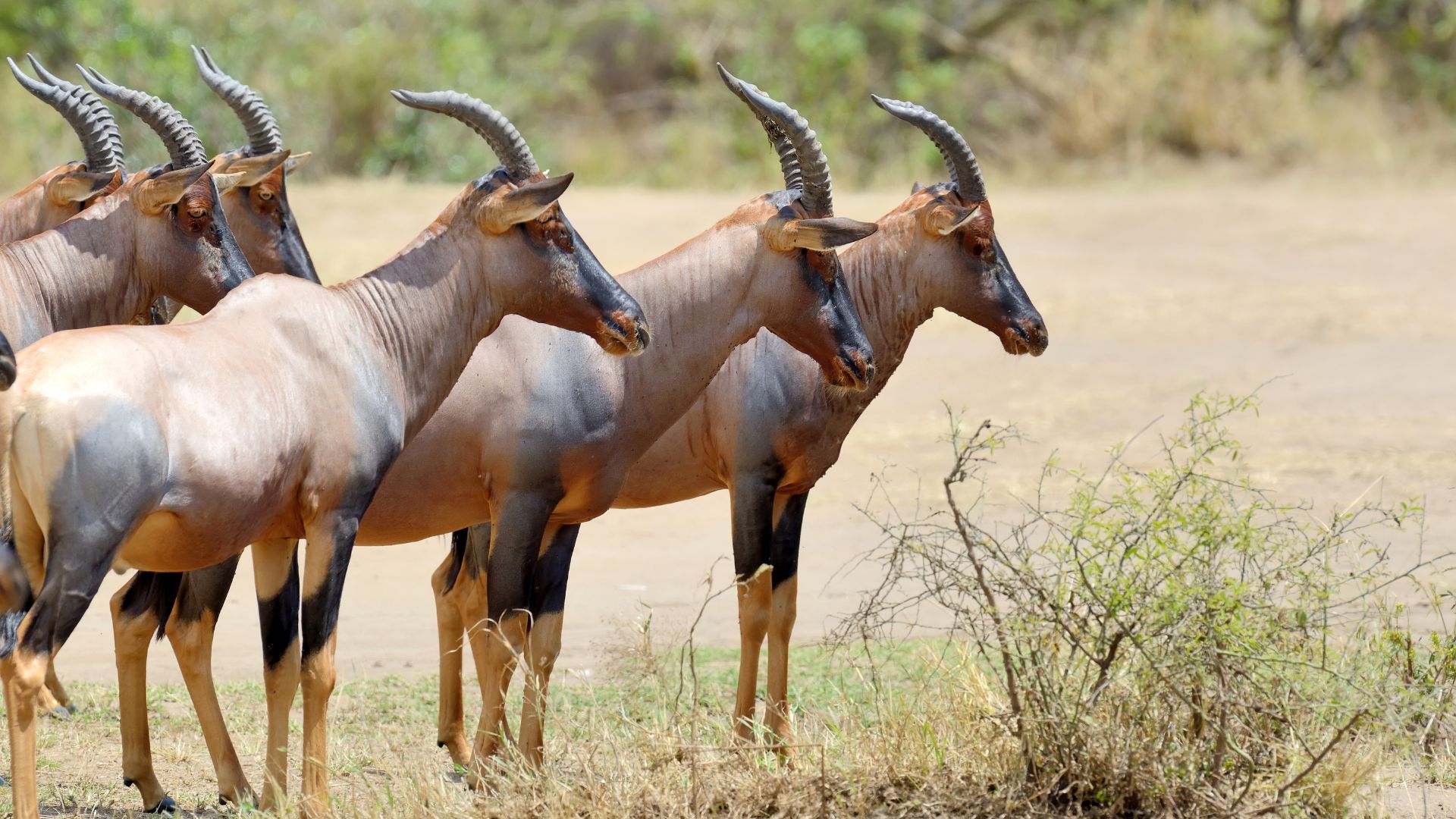
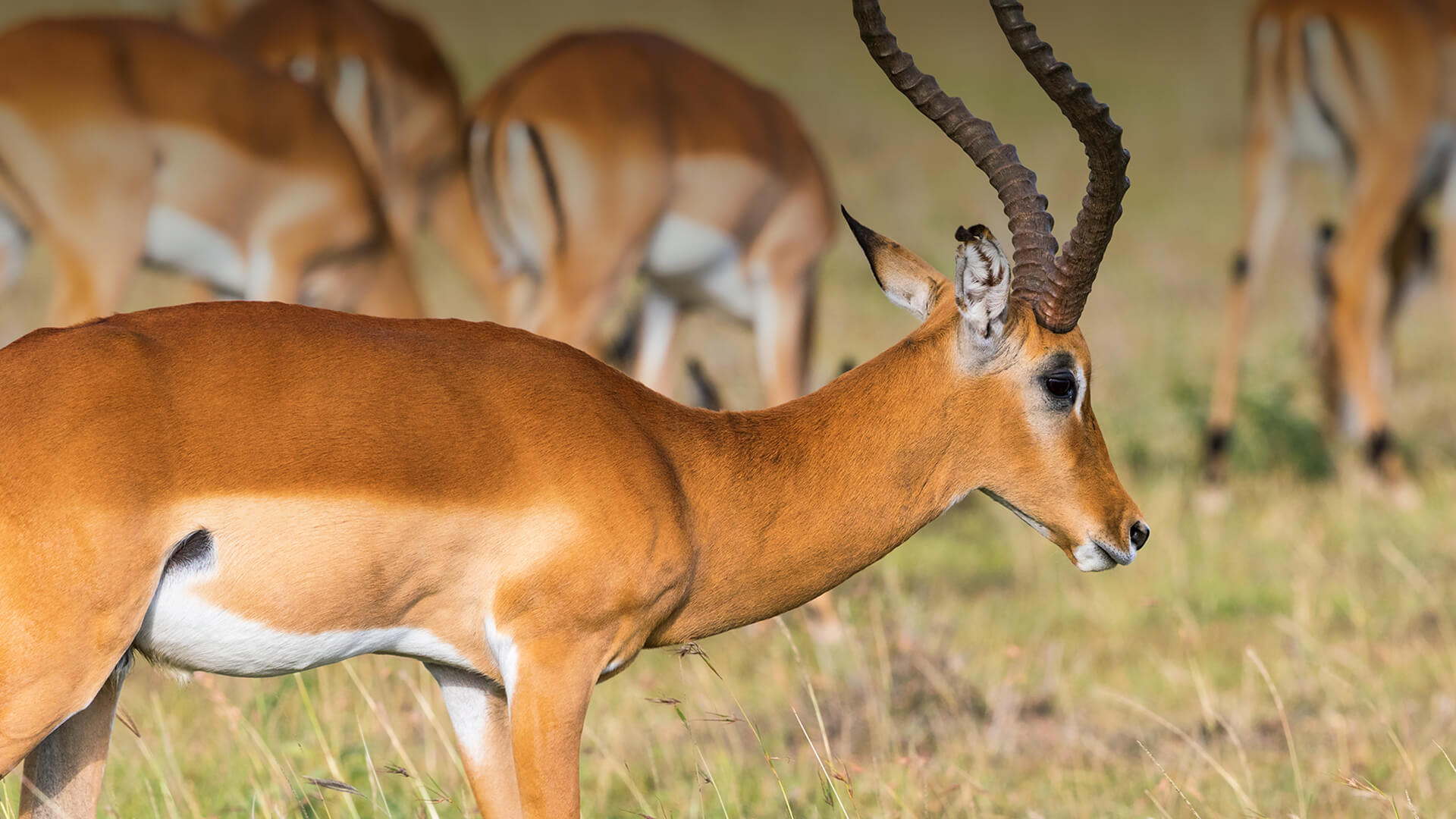
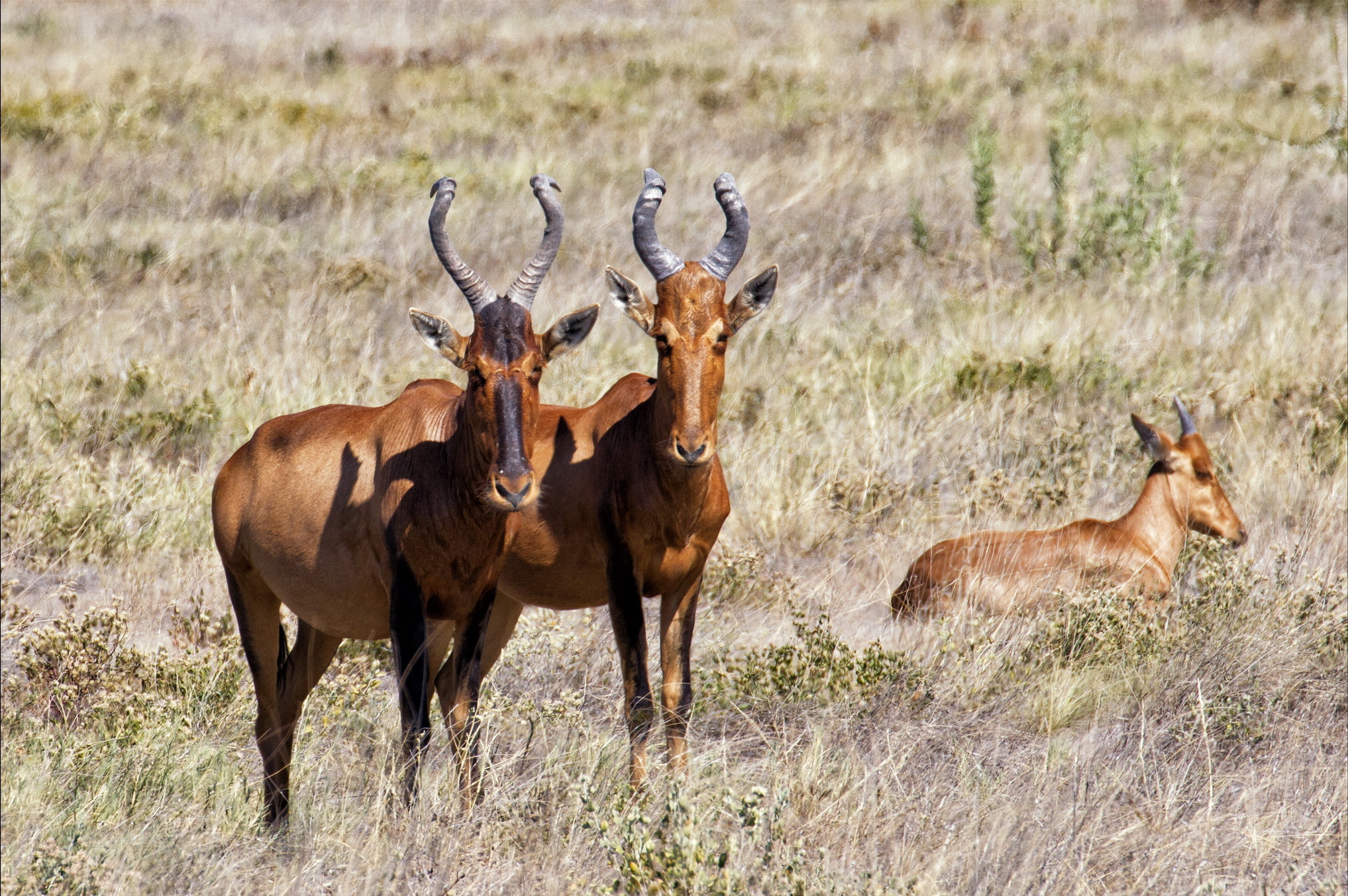
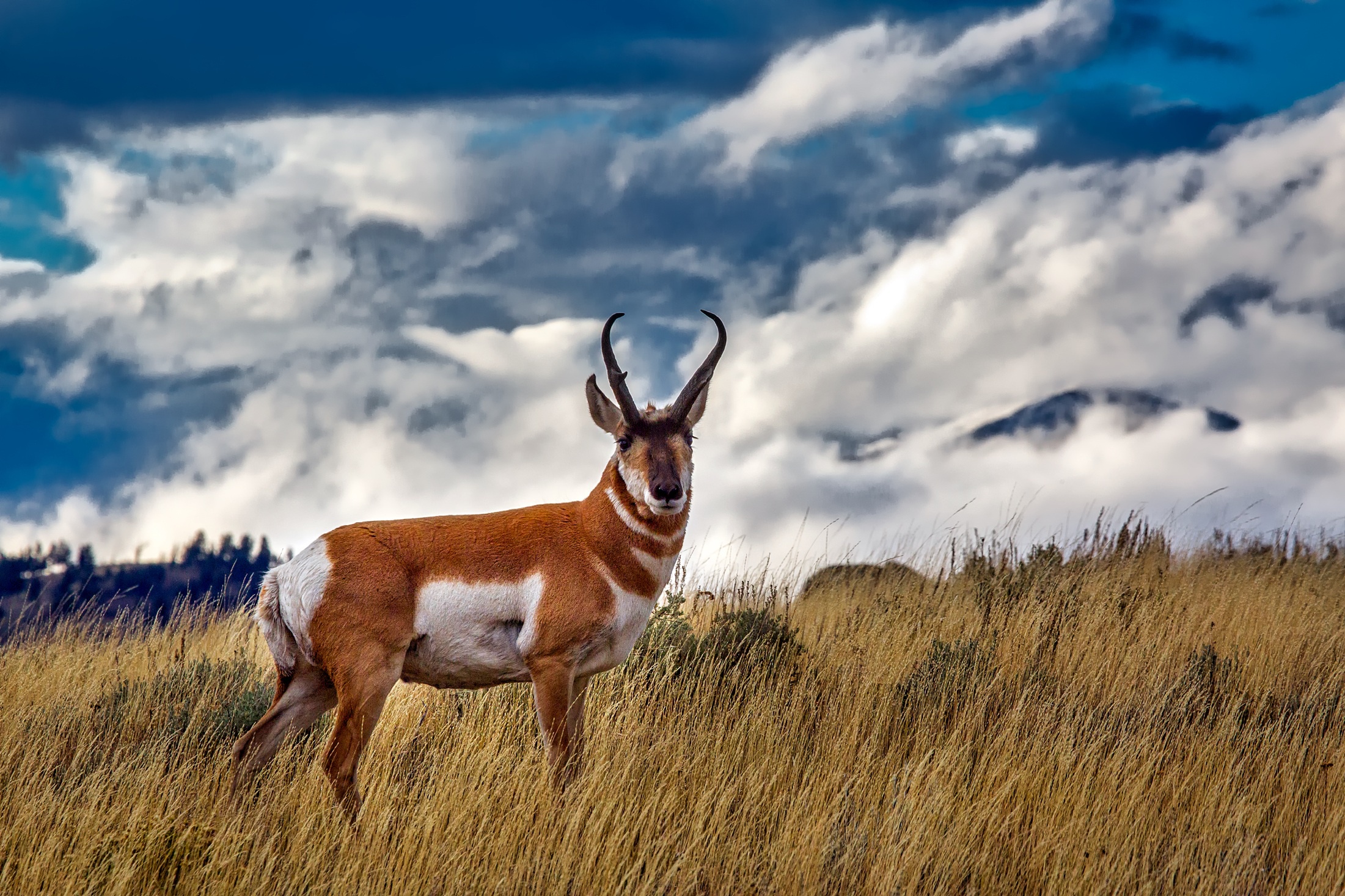

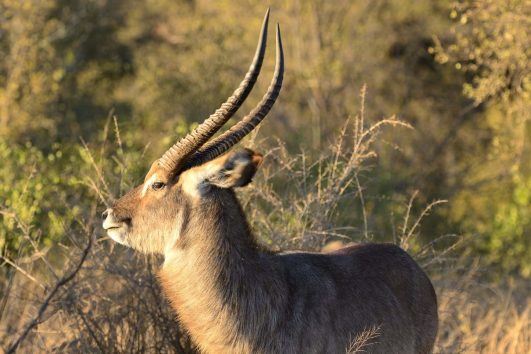
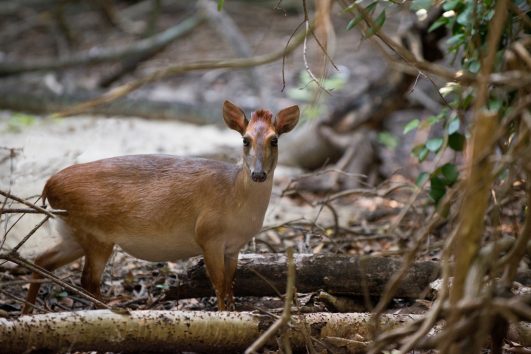
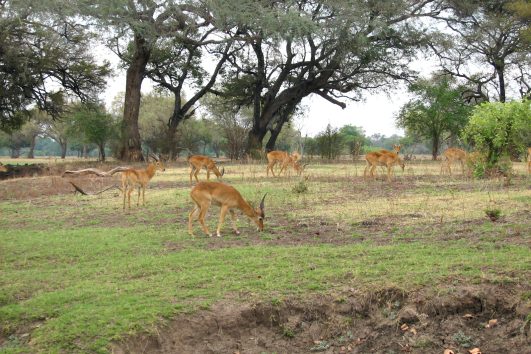
Tour Reviews
There are no reviews yet.
Leave a Review